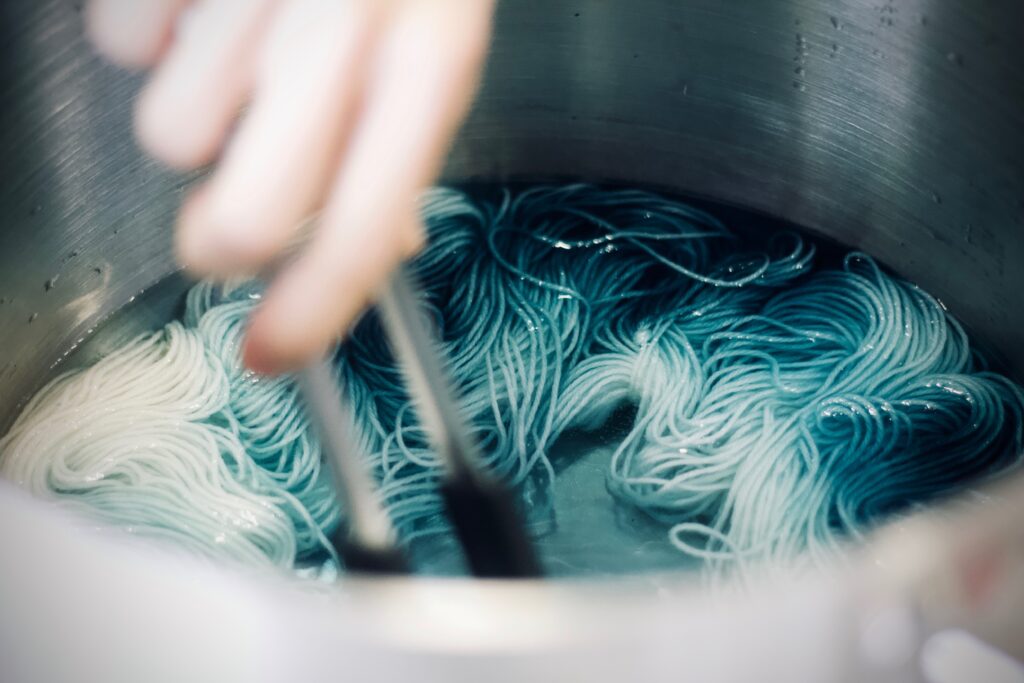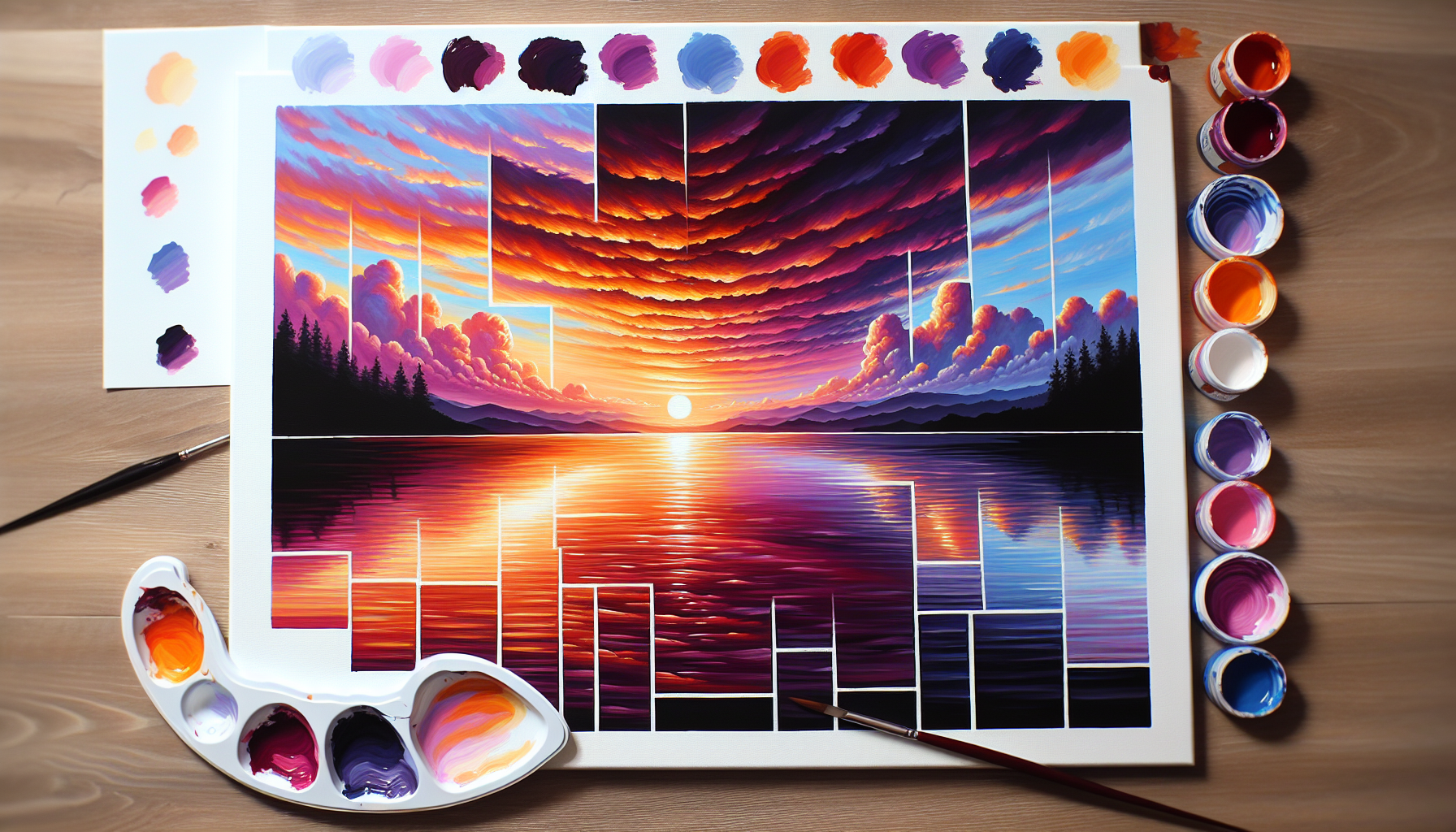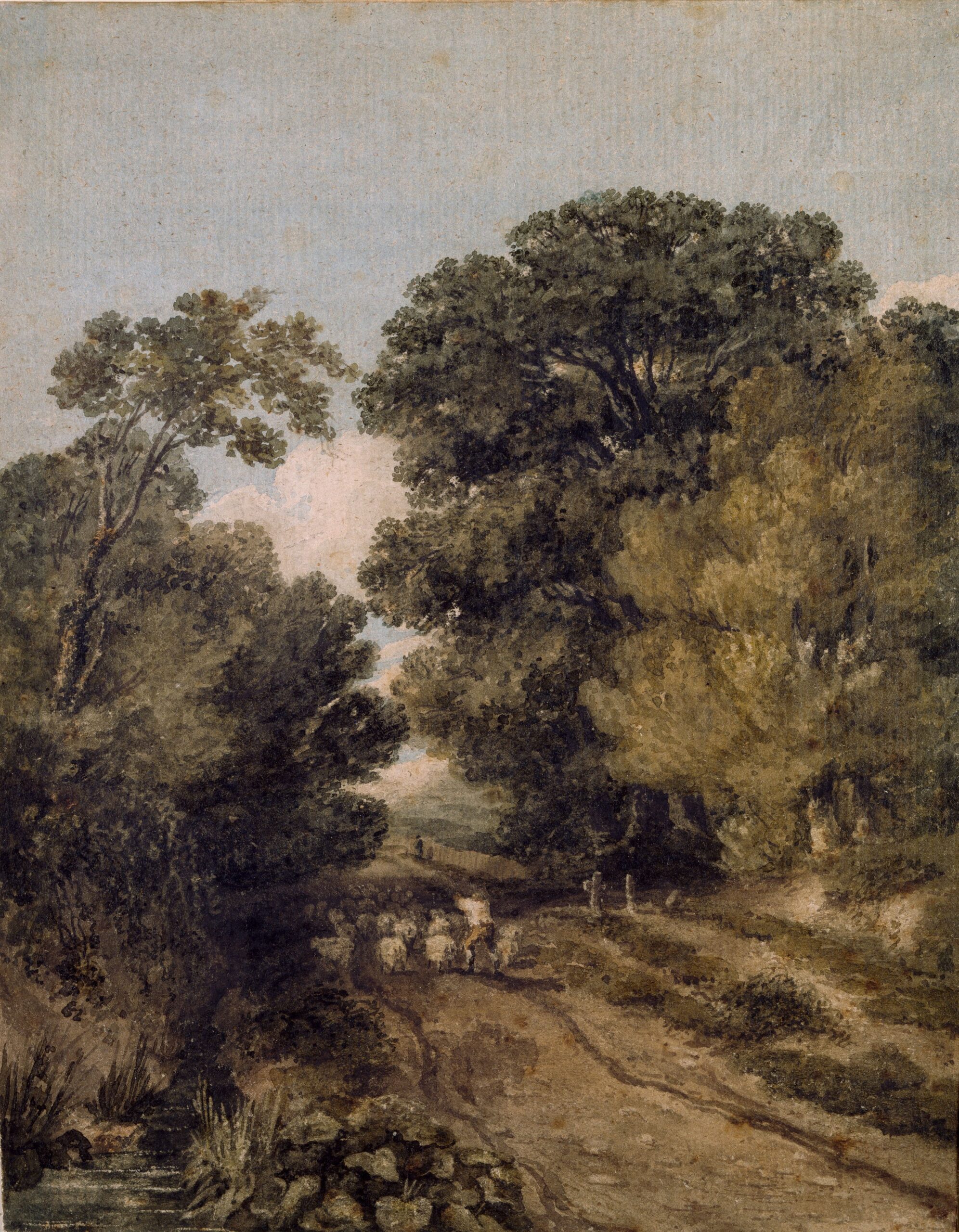Imagine adding a splash of color to your next craft project with vibrant, eye-catching chickpeas! With our easy-to-follow guide on how to dye chickpeas with acrylic paint, you’ll learn the secrets to transforming these humble legumes into stunning decorative accents. Whether you’re looking to create unique jewelry, vibrant vase fillers, or eye-catching centerpieces, this innovative technique will help you achieve stunning results. Get ready to unleash your creativity and let your imagination soar as you embark on this colorful DIY adventure!

Choosing the Right Supplies
When it comes to dyeing chickpeas with acrylic paint, it’s essential to have the right supplies on hand. In this section, we will discuss how to select the appropriate materials for this project.
Selecting Acrylic Paint
The first step in preparing to dye chickpeas is selecting the acrylic paint. You want to choose paints that are vibrant and have a good pigment concentration. Look for acrylic paints that are labeled as “non-toxic” to ensure they are safe for this craft project.
Finding Chickpeas
Next, you’ll need to gather your main ingredient: chickpeas. You can typically find chickpeas in most grocery stores. Whether you prefer to use dried chickpeas or canned ones, both work effectively for this project. It’s essential to choose chickpeas that are free from any moisture or signs of spoilage.
Gathering Other Materials
In addition to acrylic paint and chickpeas, you’ll need a few other materials to complete this project successfully. Make sure you have a large bowl for soaking the chickpeas, a strainer for rinsing them, and a sturdy wire for air drying. Additionally, consider having gloves, brushes, and sealant spray or Mod Podge ready for the later stages of the process.
Preparing the Chickpeas
Before you can start dyeing the chickpeas, it’s crucial to prepare them properly. This section will guide you through the necessary steps for cleaning, drying, and soaking the chickpeas.
Cleaning and Drying
Start by rinsing the chickpeas thoroughly under cool water. This step helps remove any impurities and dirt from the surface. Once cleaned, lay the chickpeas out on a paper towel or clean cloth to dry completely. Make sure they are evenly spread out to ensure proper drying.
Removing Skins (Optional)
If you prefer, you can remove the skins from the chickpeas for a smoother and more uniform surface. To do this, gently rub the chickpeas between your palms, allowing the skins to separate and come off. While this process is optional, it can result in a more visually appealing final product.
Soaking the Chickpeas
After cleaning and drying, it’s time to soak the chickpeas. Fill a large bowl with enough water to completely submerge the chickpeas. Allow them to soak for at least 6 to 8 hours or overnight. Soaking the chickpeas helps ensure they absorb the dye solution evenly and thoroughly.
Mixing the Dye Solution
Now that the chickpeas are prepped, it’s time to prepare the dye solution using acrylic paint. This section will cover how to prepare the paint, add water, and even mix different colors for more variety.
Preparing the Paint
Start by selecting the acrylic paint colors you want to work with. Squeeze a generous amount of each color into separate containers or compartments of a paint palette. Make sure the containers or palette are large enough to accommodate dipping or brushing the chickpeas.
Adding Water
To create the dye solution, add a small amount of water to the acrylic paint. The water helps thin the paint and allows it to better adhere to the chickpeas. Start with just a few drops of water and gradually add more until you achieve the desired consistency. Be careful not to add too much water, as it may dilute the paint and affect the vibrancy of the colors.
Mixing Colors (Optional)
If you want to experiment and create unique color variations, you can mix different acrylic paint colors together. Use a clean brush or toothpick to combine the desired colors in a separate container or on your palette. This step can add a fun and artistic twist to your dyed chickpeas.
Applying the Acrylic Paint
With the dye solution ready, it’s time to start applying the acrylic paint to the chickpeas. This section will discuss different methods you can use, including dip-dyeing, brush application, and spray painting.
Choosing the Method
Consider the final look you want to achieve and choose the method that works best for you. Dip-dyeing involves fully immersing the chickpeas into the dye solution, while brush application allows for more controlled and detailed designs. Spray painting, on the other hand, gives a more even coat of color to the chickpeas.
Dip-Dyeing
To dip dye the chickpeas, carefully lower them into the dye solution, ensuring they are fully submerged. Use a spoon or tongs to handle the chickpeas and gently swirl them around to ensure even coverage. Allow the chickpeas to soak in the dye for a few minutes, or until you achieve the desired intensity of color.
Brush Application
For a more precise and intricate design, use a small brush to apply the dye solution directly onto the chickpeas. This method allows you to create patterns, gradients, or even paint individual chickpeas with different colors. Dip your brush into the dye solution, and carefully paint onto the chickpeas, ensuring even coverage.
Spray Painting
If you prefer a quick and even application of color, consider using spray paint for your dyed chickpeas. Place the chickpeas on a flat surface covered with a protective sheet or parchment paper. Hold the spray paint can at a distance, and apply paint in short, controlled bursts, ensuring all the chickpeas get an equal coat of color.

Drying and Setting the Dye
Once you’ve applied the acrylic paint to the chickpeas, it’s important to let them dry thoroughly. This section will discuss various drying methods, including air drying, using a hair dryer, and even drying in an oven (with caution).
Air Drying
The most common and recommended method for drying dyed chickpeas is air drying. After applying the paint, spread the chickpeas out on a wire rack or a clean cloth, ensuring they are evenly spaced. Place the rack or cloth in a well-ventilated area and allow the chickpeas to dry naturally. This process typically takes around 24 to 48 hours.
Using a Hair Dryer
If you’re short on time or prefer a quicker drying process, you can use a hair dryer on a low heat setting. Hold the hair dryer a few inches away from the chickpeas and move it back and forth continuously to ensure even drying. Be cautious not to hold the dryer too close or set it to a high heat, as this may cause the paint to bubble or crack.
Using an Oven (Caution)
If you’re in a hurry and want to expedite the drying process, you can use an oven with caution. Preheat your oven to the lowest temperature setting, usually around 200°F (93°C). Place the chickpeas on a baking sheet lined with parchment paper and allow them to dry in the oven for 1 to 2 hours. Keep a close eye on them during this time to prevent overheating or scorching.
Sealing the Dye
To ensure the longevity and durability of your dyed chickpeas, it’s crucial to seal the dye properly. This section will cover two common methods of sealing: using a sealant spray or applying Mod Podge as a varnish.
Using a Sealant Spray
A sealant spray provides a protective layer over the dyed chickpeas, helping to preserve the color and prevent it from chipping or fading easily. Choose a clear sealant spray suitable for use on acrylic-painted surfaces. Hold the spray can at a distance, and evenly coat the chickpeas with a light layer of sealant. Allow the sealant to dry completely before handling the chickpeas.
Applying Mod Podge (Varnish)
Another option for sealing the dye is by using Mod Podge, a popular craft product that acts as a sealant and varnish. With a clean brush, apply a thin layer of Mod Podge onto the surface of each dyed chickpea. Make sure to cover the entire surface, including any areas with intricate designs or brush strokes. Allow the Mod Podge to dry completely, forming a protective barrier over the chickpeas.

Creating Color Variations
If you want to explore different color variations and effects, this section will guide you through a few techniques. Experimenting with different paint ratios, mixing primary colors, and adding metallic or glitter effects can help you create unique and visually stunning dyed chickpeas.
Experimenting with Different Paint Ratios
By adjusting the ratio of acrylic paint to water, you can create varying degrees of intensity for the colors. Mix different amounts of paint and water to achieve lighter or darker shades. This technique allows you to create a gradient effect or experiment with pastel tones.
Mixing Primary Colors
Mixing primary colors can open up endless possibilities for creating a wide range of hues. Combine red and yellow to create orange, blue and red to make purple, or yellow and blue to produce green. By blending the primary colors together, you can achieve secondary colors that can add depth and richness to your dyed chickpeas.
Adding Metallic or Glitter Effects
For a touch of shimmer and sparkle, you can incorporate metallic or glitter acrylic paint into your dye solutions. Mix a small amount of metallic or glitter paint with your desired colors to create eye-catching effects. This technique can elevate the visual appeal of your dyed chickpeas, adding a touch of magic to your craft projects.
Avoiding Health Concerns
While working on any crafting project, it’s important to prioritize your health and safety. This section will provide tips on using non-toxic acrylic paint, avoiding ingestion, and ensuring proper ventilation while dyeing chickpeas.
Using Non-Toxic Acrylic Paint
To keep yourself and others safe, always choose non-toxic acrylic paint for crafting projects. Non-toxic acrylic paints are free from harmful chemicals and are safe to use in well-ventilated areas. Look for labels that clearly state “non-toxic” to ensure you’re using paint that won’t cause health issues.
Avoiding Ingestion
Chickpeas dyed with acrylic paint are meant for decorative purposes only and should not be ingested. Make sure to keep them away from children and pets who may mistake them for edible items. If you plan to use the dyed chickpeas in craft projects that could end up near food or mouth, consider using alternative materials that are food-safe.
Proper Ventilation
When working with acrylic paint, ensure you have adequate ventilation to minimize exposure to fumes. Open windows or doors to create a draft, or work in a well-ventilated room. By having proper ventilation, you can reduce the risk of inhaling any potentially harmful fumes.

Craft Ideas with Dyed Chickpeas
Once you’ve dyed your chickpeas, the possibilities for crafting projects are endless. This section will provide some inspiration for using dyed chickpeas in creating decorative vases, designing jewelry, and making homemade ornaments.
Creating Decorative Vases
Arrange your dyed chickpeas in a clear glass vase to create a beautiful and eye-catching centerpiece. Mix and match colors to create patterns or gradients within the vase, adding a unique touch to your home decor. Fill the vase with water and fresh flowers for an extra burst of color and freshness.
Designing Jewelry
Dyed chickpeas can be transformed into unique and stylish jewelry pieces. Thread dyed chickpeas onto a string or wire to create a colorful necklace or bracelet. Add complementary beads or charms to enhance the overall design. It’s a fun and creative way to wear your dyed chickpeas as wearable art.
Making Homemade Ornaments
Get into the holiday spirit or add a pop of color to your Christmas tree by using dyed chickpeas as homemade ornaments. Simply attach a small loop of string or ribbon to a dyed chickpea, and hang it on your tree. Mix different colors and shapes to create a vibrant and personalized ornament collection.
Storing and Preserving Dyed Chickpeas
To ensure your dyed chickpeas stay in excellent condition for future use, proper storage and preservation techniques are essential. This section will discuss allowing sufficient drying time, using airtight containers, and avoiding exposure to sunlight.
Allowing Sufficient Drying Time
Before storing the dyed chickpeas, it’s crucial to ensure they are completely dry. Even a slight amount of moisture can lead to mold or discoloration. Give the chickpeas ample time to air dry or use a hair dryer to expedite the process. Check for any signs of residual moisture before proceeding with storage.
Using Airtight Containers
To protect your dyed chickpeas from dust, moisture, and other contaminants, store them in airtight containers. Mason jars or plastic containers with secure lids work well for this purpose. Make sure the containers are completely dry before placing the chickpeas inside to prevent any potential moisture buildup.
Avoiding Exposure to Sunlight
Sunlight can cause the vibrant colors of your dyed chickpeas to fade over time. To preserve the intensity and longevity of the colors, store the containers in a cool, dark place away from direct sunlight. This will help maintain the vibrancy of your dyed chickpeas, allowing you to enjoy them for an extended period.
In conclusion, dyeing chickpeas with acrylic paint is a fun and creative way to add a burst of color to your crafting projects. By following the outlined steps and using the right materials, you can create unique and visually stunning dyed chickpeas. Remember to prioritize your health and safety by using non-toxic paint, ensuring proper ventilation, and avoiding ingestion. With your dyed chickpeas, you can explore various craft ideas such as creating decorative vases, designing jewelry, and making homemade ornaments. By storing and preserving them correctly, you can enjoy the beauty and vibrancy of your dyed chickpeas for a long time. So, gather your supplies, unleash your creativity, and have a fantastic time dyeing chickpeas with acrylic paint!




